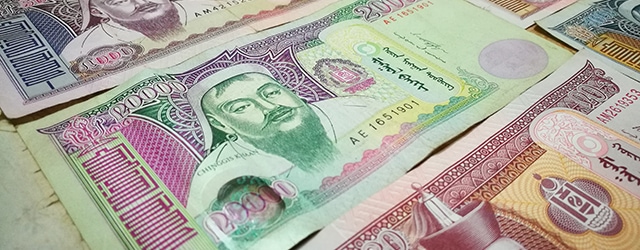In his role as first deputy governor of the Bank of Mongolia, Erdembileg Ochirkhuu is working to ensure that the country has fiscal and financial buffers to withstand global shocks.

Global Finance: Is the Mongolian economy being affected by the trade war between the US and China?
Erdembileg Ochirkhuu: The short answer is yes. The uncertainty surrounding these trade tensions is one of the factors that we try to look at in our decision-making process. So far, we have had good access to Chinese markets, and we believe the fiscal stimulus from the Chinese authorities is playing its role via increased export demand for commodities. Down the road, I see potential for agricultural commodity exports. Given our proximity to China, our prices should be competitive and we have the potential to become not just a metals and mining exporter but an agricultural exporter, as well. Our government is trying to diversify the economy, and no doubt it will bear fruit in the future.
GF: How significant are commodity prices to the Mongolian economy, and how is that relationship managed?
Ochirkhuu: Commodities make up 80% of our exports and they generate 20% of fiscal revenue. And because of this dependent structure, movements in commodity prices create volatility in the economy. It should be noted that although the commodity price outlook is of concern to us over the medium term, current levels are much higher than the breakeven points for major coal, copper and iron ore companies in Mongolia.
Exchange-rate flexibility and countercyclical policy measures are important tools for us. Both fiscal and monetary policy has been tight, and financial regulations were strengthened to build financial sector resilience. As a result of prudent fiscal policy, the government balance sheet has turned into a surplus while debt has dropped sharply—from 80% of GDP in 2016 to 54% in June 2019. We started tightening monetary policy at the end of last year. The inflation rate and outlook are within the central bank’s range. We have been accumulating reserves; they have more than tripled over the past three years. Hence, we have a buffer to overcome unfavorable external shocks in the future.
GF: How healthy is the financial sector in Mongolia?
Ochirkhuu: We reformed financial sector regulations and have improved banks’ resilience. Although nonperforming loans remain at a high level due to our asset-quality review exercise, the loan-to-deposit ratio went down from 140% to about 100%, and loan dollarization has declined to 14%—a nine-year low. We also started using macroprudential measures against excessive consumer credit and unhedged foreign currency loans. Building resilience in the household sector is essential for the health of the overall economy in case of external shocks, while a lower level of dollarization should help exchange-rate flexibility.
GF: Will the Bank of Mongolia be able to manage capital outflows on the basis of the “risk-off” mentality hovering around frontier-market economies? How will this be achieved?
Ochirkhuu: Yes, there is that “risk-off” mentality is hovering around frontier markets, but our numbers suggest the contrary, whether it is balance of payments numbers or bond yields, which came down to 6% from 11%. At the Bank of Mongolia, we focused on ensuring macroeconomic and financial stability in the medium term. Monetary policy measures aim to reduce risks, prevent risk accumulation and correct previously unsustainable policy. So far, we have accomplished all the numerical targets of the International Monetary Fund program, and other structural benchmarks are being achieved as planned. At the same time, we did number of things for the first time, like an asset-quality review of the banking sector and a forensic audit.
GF: What is the long-term outlook for the Mongolian economy?
Ochirkhuu: In spite of uncertainty and the likelihood of external negative shocks, the long-term growth prospect for Mongolia looks positive. In the coming years, domestic demand will be supported by construction work on big infrastructure and mining projects. Going forward, these projects will expand our production and export capacity and will ensure sustainable long-term growth. Maturing debt in the coming years will be a challenge, but I am sure we will be able to resolve those in a timely manner in cooperation with our investors. Building fiscal and financial buffers is important, and international reserve accumulation is key.



